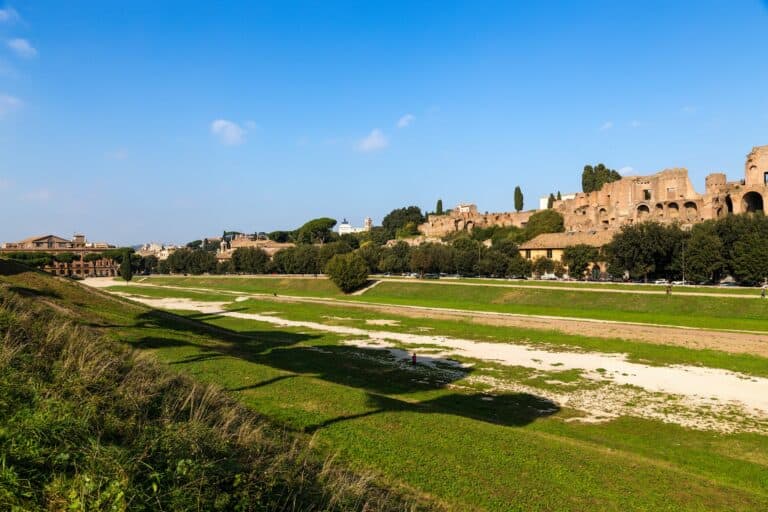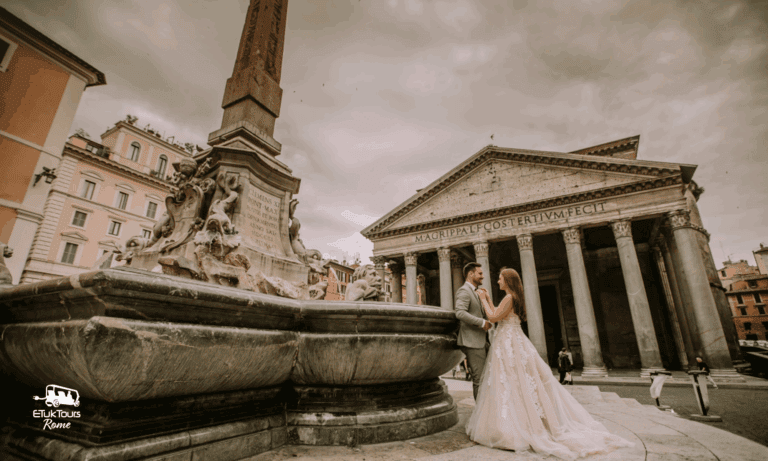Palatine Hill, one of the Seven Hills of Rome, is steeped in history and legend, making it one of the most significant archeological sites in the city. Rising above the Roman Forum and the Circus Maximus, this hill is where ancient Rome was born. According to legend, it’s here that Romulus founded Rome in 753 BCE, after a fateful struggle with his twin brother, Remus. Today, Palatine Hill is a window into Rome’s rich history, featuring ruins of imperial palaces, temples, and gardens that once housed emperors, noble families, and legendary figures.
For visitors, ETukToursRome offers a unique and comfortable way to explore this iconic site, letting you soak in the hill’s grandeur while learning the fascinating tales of Rome’s origins.
The Myths and Legends of Palatine Hill
Palatine Hill is central to Rome’s mythological origins. According to ancient lore, the abandoned twins Romulus and Remus were found and nursed by a she-wolf in a cave on the hill, known as the Lupercal. Later, Romulus would establish Rome here, marking Palatine Hill as the city’s birthplace. This myth endures as a symbol of Rome’s resilience and legendary origins, attracting historians, archeologists, and tourists alike.
What to See on Palatine Hill
1. The Imperial Palaces
- Palatine Hill served as the residential area for many Roman emperors. The ruins of the Domus Augustana, Domus Flavia, and House of Livia reveal the opulent lifestyle of Rome’s rulers. These sprawling palace complexes offer insight into the grandeur of imperial Rome, with remnants of marble floors, elaborate frescoes, and expansive courtyards.
2. Hippodrome of Domitian
- The Hippodrome is a U-shaped structure that was once used for athletic competitions and entertainment. Although its exact purpose is debated, the Hippodrome reflects the Roman passion for public spectacles and displays of athletic prowess.
3. Temple of Apollo
- Built by Emperor Augustus in 28 BCE, this temple was dedicated to Apollo, the god he considered his divine protector. The temple once featured gilded statues, marble columns, and an extensive library, emphasizing Rome’s reverence for the gods and the emperors’ association with divinity.
4. The Farnese Gardens
- Created in the 16th century atop the ruins of ancient Rome, the Farnese Gardens were one of the first private botanical gardens in Europe. Visitors can enjoy a serene walk through terraces, fountains, and beautifully manicured gardens with breathtaking views of the city below.
5. Stadium of Domitian
- Part of the Domus Augustana, this stadium was a private arena for emperors to watch athletic competitions and gladiatorial contests in the comfort of their palace. The structure’s grand scale and design demonstrate the importance of sport and entertainment in imperial Rome.
Why Visit Palatine Hill?
Palatine Hill offers a profound connection to Rome’s ancient past. The views from the top are unmatched, offering panoramic sights of the Roman Forum, the Colosseum, and the cityscape. As you walk through the ruins and gardens, you’ll experience a blend of nature and history, transporting you back to a time when emperors ruled and Rome was the center of the world.
Discover Palatine Hill with ETukToursRome
With ETukToursRome, you can enjoy an intimate tour of Palatine Hill with knowledgeable guides who bring Rome’s history to life. Our electric tuk-tuks allow you to explore Rome’s ancient sites comfortably and efficiently, covering more ground in less time. Let us guide you through the legends, ruins, and beauty of Palatine Hill for an unforgettable journey into Rome’s origins.
Join us at ETukToursRome for an experience that combines convenience, history, and immersive storytelling. Book today and step back in time to ancient Rome!









